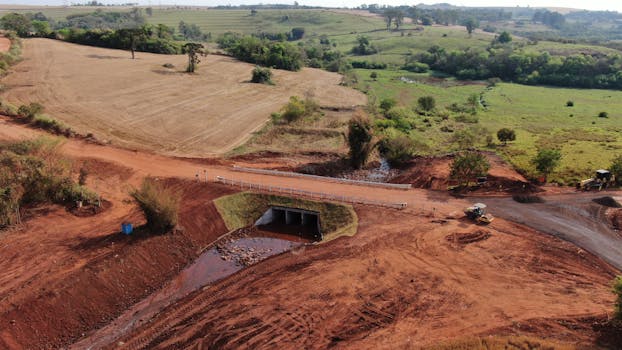+17162654855
+17162654855
NRP Publication News serves as an authoritative platform for delivering the latest industry updates, research insights, and significant developments across various sectors. Our news articles provide a comprehensive view of market trends, key findings, and groundbreaking initiatives, ensuring businesses and professionals stay ahead in a competitive landscape.
The News section on NRP Publication News highlights major industry events such as product launches, market expansions, mergers and acquisitions, financial reports, and strategic collaborations. This dedicated space allows businesses to gain valuable insights into evolving market dynamics, empowering them to make informed decisions.
At NRP Publication News, we cover a diverse range of industries, including Healthcare, Automotive, Utilities, Materials, Chemicals, Energy, Telecommunications, Technology, Financials, and Consumer Goods. Our mission is to ensure that professionals across these sectors have access to high-quality, data-driven news that shapes their industry’s future.
By featuring key industry updates and expert insights, NRP Publication News enhances brand visibility, credibility, and engagement for businesses worldwide. Whether it's the latest technological breakthrough or emerging market opportunities, our platform serves as a bridge between industry leaders, stakeholders, and decision-makers.
Stay informed with NRP Publication News – your trusted source for impactful industry news.
Energy

Revitalizing Land Use: How Mineral Resource Planning Drives Ecological Environment Protection and Sustainable Development
The escalating global demand for minerals, coupled with the imperative for ecological preservation, necessitates a paradigm shift in how we approach resource extraction and land management. Traditional mineral resource planning often prioritized economic gains over environmental sustainability, leading to widespread habitat destruction, pollution, and biodiversity loss. However, a new focus on integrating ecological environment protection evaluation methods within mineral resource planning is emerging, promising a more sustainable future. This integrated approach offers a powerful tool for balancing economic development with ecological integrity and minimizing the impact of mining on land use.
The environmental footprint of mining activities is undeniable. From deforestation and habitat fragmentation to soil erosion, water contamination, and greenhouse gas emissions, the negative consequences can be far-reaching and long-lasting. Keywords such as mining environmental impact assessment, sustainable mining practices, and land reclamation highlight the growing awareness of these challenges. Traditional approaches, often lacking comprehensive ecological considerations, have led to unsustainable land use practices, harming biodiversity and impacting local communities.
This unsustainable model is no longer tenable. Governments, industries, and communities are increasingly demanding a more holistic approach that prioritizes sustainable development goals. This requires sophisticated ecological environment protection evaluation methods explicitly integrated into mineral resource planning from the initial exploration phase to mine closure and post-mining land use.
A successful integration requires a multi-faceted strategy, encompassing:
Comprehensive Environmental Impact Assessments (EIAs): These assessments must go beyond simple compliance checks. They need to incorporate detailed baseline ecological surveys, predictive modelling of potential impacts (including cumulative effects), and robust mitigation strategies. Keywords like biodiversity impact assessment, habitat restoration, and water quality monitoring are crucial to effective EIAs.
Strategic Environmental Assessment (SEA): SEA provides a broader perspective, evaluating the environmental implications of policy, plans, and programs related to mineral resource development. This allows for proactive identification and mitigation of potential environmental problems at a higher level.
Life Cycle Assessment (LCA): LCA quantifies the environmental impacts of mineral extraction across its entire lifecycle, from resource extraction to product disposal. This enables informed decision-making about resource efficiency and waste minimization.
Participatory Approaches: Engaging local communities and stakeholders throughout the planning process is vital. Their traditional ecological knowledge and concerns must be considered to ensure socially and environmentally responsible outcomes. This participatory approach emphasizes community engagement, stakeholder consultation, and environmental justice.
Technological Advancements: Innovative technologies, such as remote sensing, Geographic Information Systems (GIS), and advanced modelling techniques, can greatly enhance the precision and effectiveness of ecological assessment and monitoring. Keywords like remote sensing for environmental monitoring, GIS for land use planning, and predictive modelling of environmental impacts represent the cutting edge of this field.
Effective ecological environment protection evaluation requires clearly defined metrics and indicators. These should assess impacts across various ecological compartments, including:
The selection of appropriate indicators is crucial and should be tailored to the specific ecological context and mining operation. The use of standardized methodologies and data reporting ensures comparability and transparency.
The integration of ecological considerations into mineral resource planning significantly impacts land use. Instead of focusing solely on extraction, the approach prioritizes minimizing negative impacts and maximizing opportunities for restoration and rehabilitation.
Successful post-mining land use planning involves:
Effective post-mining land use planning requires long-term commitment and financial resources. It's essential to develop clear plans and secure funding for successful restoration efforts. This long-term perspective shifts the focus from simply extracting resources to creating a legacy of environmental stewardship.
Integrating ecological environment protection evaluation methods into mineral resource planning represents a fundamental shift towards a more sustainable approach to mining. By explicitly considering environmental impacts throughout the entire lifecycle of mining operations, from exploration to post-mining land use, we can significantly reduce the negative effects on land and ecosystems. This integrated approach is not merely an environmental imperative; it's also a crucial element of long-term economic prosperity and social equity. By embracing these innovative planning strategies, we pave the way for a future where mineral resource extraction can coexist harmoniously with ecological integrity and sustainable development. The adoption of these practices is essential to achieving the UN Sustainable Development Goals (SDGs) related to sustainable land management and responsible resource consumption.